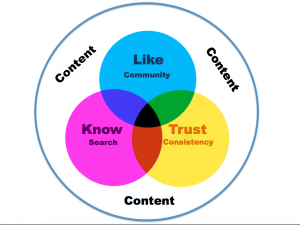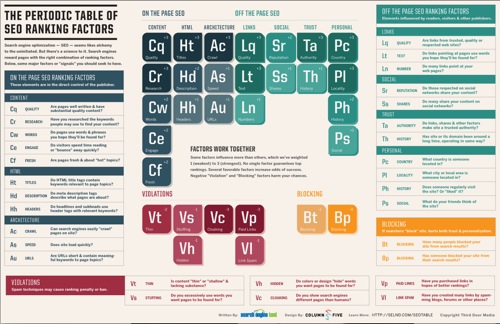Use social media to drive traffic to your business’ website
September 14, 2013
 Social media is an ever-increasing facet of everyday business. Companies large (Starbucks) and small (your local car shop) are using social media to expand their exposure and reach a broad base of prospective consumers.
Social media is an ever-increasing facet of everyday business. Companies large (Starbucks) and small (your local car shop) are using social media to expand their exposure and reach a broad base of prospective consumers.
B2B marketers are now spending 30% of their budgets on social media programs, trying to reach, among others, the 21 million+ Twitter users (per eMarketer). There are big audiences on social media for your company, and using some strategies are more effective than others.
Here are five strategies you can employ to promote your business website through social media.
Engage Directly with Consumers
To generate online conversations, businesses can engage customers and fans with photos, links and more from their blog or website. That conversation can lead to new product insights and customer service issues.
Maintain and Develop Visibility Among Your Consumer Base
Be visible with social media. Post links, pictures and video clips on social networks for your current and prospective customers. Your steady use of social media can help keep your business relevant and known, while gradually expanding exposure.
Target specialty audiences online with a microsite, which refers traffic to your main website. Create SEO marketing materials for direct sales through your primary domain via a website like MyHosting VPS hosting.
Generate Sales Referrals Through Social Media Platforms
Provide links to products or other pages that are likely to prompt consumers to make a purchase. The links you use, and the way you present them through your social media profiles, will have an impact on your business’ performance. Helpful tip: send tweets on your company’s various white papers, articles and case studies to encourage consumer interest in your company.
Data Collection and Analysis to Improve Operations Efficiency
When it comes to data, social media is a gold mine. Data analysis informs you of the size of your social media following, its growth rate and levels of engagement. You can also track total referrals to determine which social networks are most effective in generating new business. Look at these numbers for the percentage of referrals that lead to sales.
Use Feedback to Guide Future Efforts
As you gain insights from comments and data analysis, your internal teams should start to identify areas for improvement. Then you can implement solutions in your day-to-day operations.
By establishing a basic social media marketing approach, you can set yourself on the course to increased revenue and a much greater return on the investment into your website.
More

 In today’s marketplace, a company’s website is their first impression with prospects. It’s a rare purchase today that doesn’t begin with some sort of research or due diligence. And as consumers (both B2C and B2B) find themselves more time starved and more web savvy – the research tool of choice is often a Google search.
In today’s marketplace, a company’s website is their first impression with prospects. It’s a rare purchase today that doesn’t begin with some sort of research or due diligence. And as consumers (both B2C and B2B) find themselves more time starved and more web savvy – the research tool of choice is often a Google search.


 Drew’s note: Here’s a guest post by Brad Shorr on a topic everyone wants to know more about — how to improve SEO.
Drew’s note: Here’s a guest post by Brad Shorr on a topic everyone wants to know more about — how to improve SEO.



